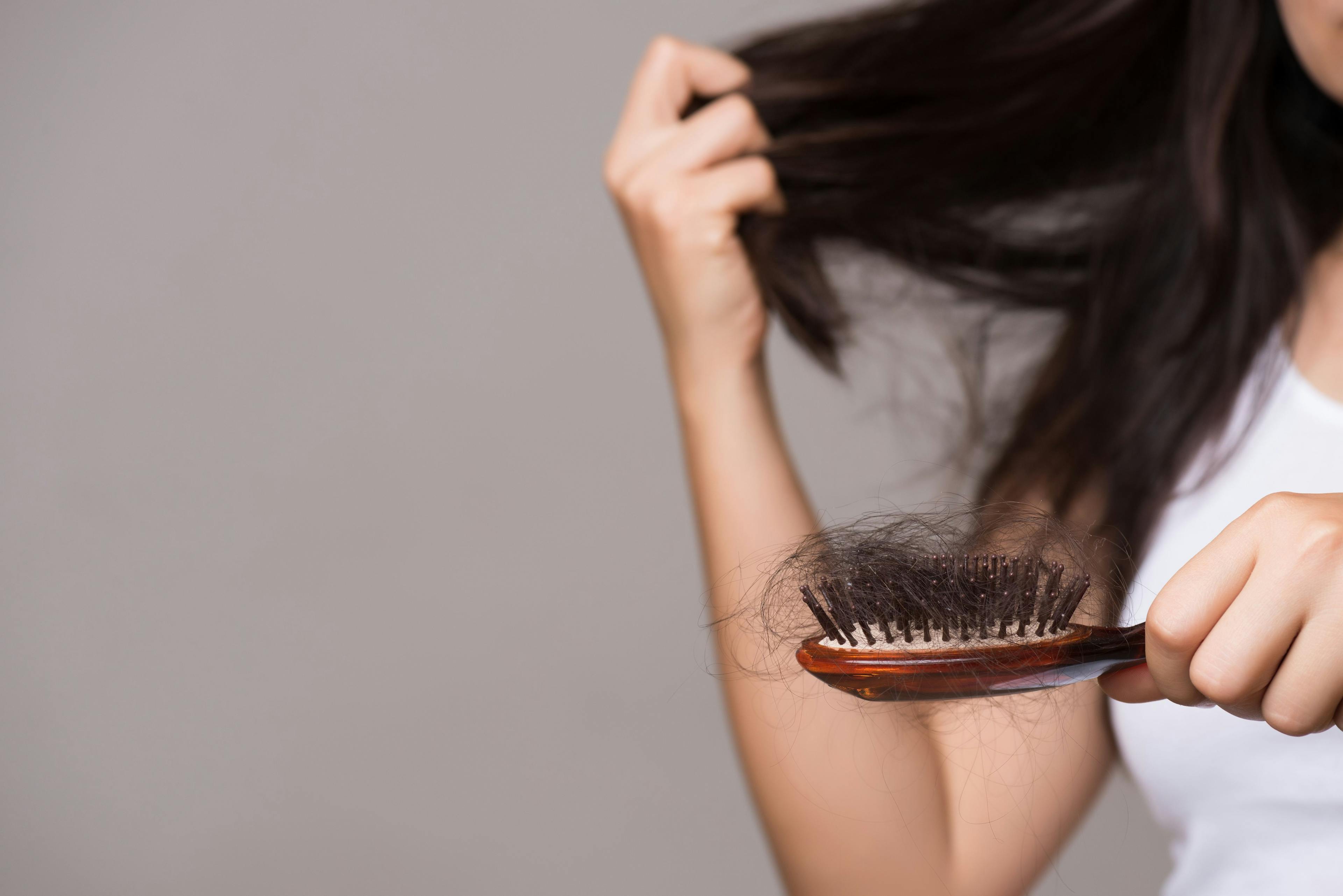- Acne
- Actinic Keratosis
- Aesthetics
- Alopecia
- Atopic Dermatitis
- Buy-and-Bill
- COVID-19
- Case-Based Roundtable
- Chronic Hand Eczema
- Chronic Spontaneous Urticaria
- Drug Watch
- Eczema
- General Dermatology
- Hidradenitis Suppurativa
- Melasma
- NP and PA
- Pediatric Dermatology
- Pigmentary Disorders
- Practice Management
- Precision Medicine and Biologics
- Prurigo Nodularis
- Psoriasis
- Psoriatic Arthritis
- Rare Disease
- Rosacea
- Skin Cancer
- Vitiligo
- Wound Care
Publication
Article
Dermatology Times
Study Finds JAK Inhibitors Safer Than Other Systemic Agents
Author(s):
JAK inhibitors may cause less adverse events compared with traditional systemic therapies.
Dermatologists have been concerned about the safety profile of Janus Kinase (JAK) inhibitors like upadacitinib and abrocitinib for the treatment of atopic dermatitis (AD) due to their boxed safety warnings. A study published this month in the Journal of Drugs in Dermatology and conducted by Stefano Daniele, MD/PhD candidate at the Yale School of Medicine, in New Haven, Connecticut, and Christopher Bunick, MD/PhD, associate professor of dermatology at the same institution, compared the safety of JAK inhibitors to that of traditional systemic therapy in AD.1
“Interestingly, what we found is that the JAK inhibitors tended to be safer than systemic agents that we didn’t think twice about using for severe atopic dermatitis patients in the past, like methotrexate, cyclosporine, and oral steroids like prednisone. In fact, oral prednisone, which does not have a box warning, had some of the highest rates of adverse effects,” said Bunick.
In 2021, the US Food and Drug Administration (FDA) issued a Drug Safety Communication detailing preliminary results of a post-marketing safety trial that compared tofacitinib to tumor necrosis factor-alpha (TNF-α) inhibitors in patients with rheumatoid arthritis who were 50 years or older, were taking methotrexate, and had at least 1 preexisting cardiovascular risk factor. Study data demonstrated a higher risk of major adverse cardiovascular events (MACE) and cancer in patients taking tofacitinib than in those receiving TNF-α inhibitors. After a final review, the FDA concluded that there is an increased risk of MACE, blood clots, cancer, and death with tofacitinib and mandated the inclusion of a boxed warning for tofacitinib and all other JAK inhibitors due to their similar mechanisms of action.
Prescribing medications with boxed warnings is not new in dermatology. The concern now is how to comfortably prescribe JAK inhibitors and whether patients will feel comfortable using the drug. According to the study, one of the biggest concerns with a boxed warning is how it influences clinician prescribing habits.
To determine the incidence of adverse events (AEs) with JAK inhibitors versus with other systemic agents, Daniele and Bunick compared the long-term incidence rates of serious AEs as events per 100 patient-years (PY) for upadacitinib and abrocitinib to the AEs of systemic methotrexate, cyclosporine, and corticosteroids. Daniele and Bunick paid specific attention to malignancy AEs (except nonmelanoma skin cancer [NMSC]), MACE, and venous thromboembolism (VTE).
They studied the AE incidence rates of upadacitinib as reported in combined outcomes from the Measure UP1 and Measure UP2 studies.2 The AE incidence rate for abrocitinib were examined as reported in the all-abrocitinib cohort of the integrated safety analysis study.3 They then performed a focused literature search of the incidence rates for malignancy, NMSC, MACE, and VTE associated with the use of methotrexate, cyclosporine, or systemic corticosteroids in AD. No data was found on specific incidence rates for the systemic therapies. Daniele and Bunick performed another focused literature search of articles reporting the incidence rates for malignancy, NMSC, MACE, and VTE related to the use of methotrexate, cyclosporine, and systemic corticosteroids for the treatment of other conditions or in other medical contexts. They compared the incidence rates for malignancy, NMSC, MACE, and VTE associated with the use of upadacitinib and abrocitinib in AD with:
- The AE incidence rates reported in clinical trials using methotrexate in rheumatoid arthritis4
- The incidence rates for malignancy and NMSC derived from a cohort study of patients with psoriasis using cyclosporine5
- The incidence rates for MACE derived from a Korean cohort study of patients with psoriasis treated with cyclosporine6
- The incidence rates for malignancy and NMSC derived from a cohort study of elderly men (≥65 years of age) with inflammatory bowel disease in the United States National Veterans Affairs Healthcare System treated with systemic corticosteroids7
- The incidence rate of MACE derived from a large, population-based cohort study in Scotland of patients taking the equivalent of ≥7.5 mg systemic corticosteroids daily8
- The incidence rate of VTE derived from a large prospective cohort study investigating risk factors for VTE in primary care in the United Kingdom in which a subset of patients was exposed to systemic corticosteroids9
- The baseline incidence rates of malignancy in patients with AD and the general population10
- The baseline incidence rates of MACE in patients with AD and in control subjects11
Regarding malignancy, upadacitinib and abrocitinib demonstrated the lowest rate, at 0.2 events per 100 PY. Upadacitinib (30 mg; 0.5 events per 100 PY), methotrexate (0.5 events per 100 PY), and cyclosporine (0.6 events per 100 PY) demonstrated the next lowest rates of malignancy. Systemic corticosteroids had the highest malignancy rate, at 4.3 events per 100 PY. The study authors noted that “the overall incidence rate of all malignancies (excluding cutaneous basal and squamous cell carcinoma) in the general United States population in 2020 was estimated to be 0.55 events per 100 PY.”
Methotrexate, cyclosporine, upadacitinib, and abrocitinib had between 0.3 and 0.6 events per 100 PY for NMSC. Systemic corticosteroids have the highest NMSC risk, at 3.9 events per 100 PY.
For MACE, upadacitinib had 0.0 to 0.1 events per 100 PY. The 200-mg dose of abrocitinib has 0.2 events per 100 PY, and the 100-mg dose of abrocitinib and methotrexate had 0.5 to 0.6 events per 100 PY. Cyclosporine had 2.8 events per 100 PY, and systemic corticosteroids had 7.6 events per 100 PY, higher rates than both JAK inhibitors and methotrexate.
Lastly, methotrexate had the highest rate of VTE, at 0.5 events per 100 PY. Upadacitinib, abrocitinib, and systemic corticosteroids had lower rates, at between 0 and 0.4 events per 100 PY. No data was available for cyclosporine and VTE. Overall, upadacitinib had the lowest rate for VTE, at 0.1 event per 100 PY.
All drugs in this study contained a boxed warning, except for systemic corticosteroids, the medication class with the highest incidence rates for malignancy, NMSC, and MACE.
Overall, this study of malignancy incidence—non-NMSC, NMSC, MACE, and VTE—for upadacitinib and abrocitinib compared with traditional systemic agents (methotrexate, cyclosporine, and corticosteroids) demonstrated that the JAK inhibitors have equal or lower rates of AEs. Daniele and Bunick hope the study data reassures dermatologists that JAK inhibitors are a major advancement in technology, precision medicine, and safety compared with previously available systemic agents.
References
- Daniele S, Bunick C. JAK inhibitor safety compared to traditional systemic immunosuppressive therapies. J Drugs Dermatol. 2022;21(12):1298-1303. doi:10.36849/JDD.7187
- Guttman-Yassky E, Teixeira HD, Simpson EL, et al. Once-daily upadacitinib versus placebo in adolescents and adults with moderate-to-severe atopic dermatitis (Measure Up 1 and Measure Up 2): results from two replicate double-blind, randomised controlled phase 3 trials. Lancet. 2021;397(10290):2151-2168. doi:0.1016/S0140-6736(21)00588-2
- Simpson EL, Silverberg JI, Nosbaum A, et al. integrated safety analysis of abrocitinib for the treatment of moderate-to-severe atopic dermatitis from the phase II and phase III clinical trial program. Am J Clin Dermatol. 2021;22(5):693-707. doi:10.1007/s40257-021-00618-3
- Cohen SB, van Vollenhoven RF, Winthrop KL, et al. Safety profile of upadacitinib in rheumatoid arthritis: integrated analysis from the SELECT phase III clinical programme. Ann Rheum Dis. 2021;80(3):304-311. doi:10.1136/annrheumdis-2020-218510
- Paul CF, Ho VC, McGeown C, et al. Risk of malignancies in psoriasis patients treated with cyclosporine: a 5 y cohort study. J Invest Dermatol. 2003;120(2):211-216. doi:10.1046/j.1523-1747.2003.12040.x
- Hong JR, Jeong H, Kim H, et al. The potential impact of systemic anti-inflammatory therapies in psoriasis on major adverse cardiovascular events: a Korean nationwide cohort study. Sci Rep. 2021;11(1):8588. doi:10.1038/s41598-021-87766-y
- Khan N, Pernes T, Weiss A, et al. incidence of infections and malignancy among elderly male patients with IBD exposed to vedolizumab, prednisone, and 5-ASA medications: a nationwide retrospective cohort study. Adv Ther. 2021;38(5):2586-2598. doi:10.1007/s12325-021-01713-x
- Wei L, MacDonald TM, Walker BR. Taking glucocorticoids by prescription is associated with subsequent cardiovascular disease. Ann Intern Med. 2004;141(10):764-770. doi:10.7326/0003-4819-141-10-200411160-00007
- Huerta C, Johansson S, Wallander MA, García Rodríguez LA. Risk factors and short-term mortality of venous thromboembolism diagnosed in the primary care setting in the United Kingdom. Arch Intern Med. 2007;167(9):935-943. doi:10.1001/archinte.167.9.935
- Arana A, Wentworth CE, Fernández-Vidaurre C, Schlienger RG, Conde E, Arellano FM. Incidence of cancer in the general population and in patients with or without atopic dermatitis in the U.K. Br J Dermatol. 2010;163(5):1036-1043. doi:10.1111/j.1365-2133.2010.09887.x
- Andersen YMF, Egeberg A, Gislason GH, Hansen PR, Skov L, Thyssen JP. Risk of myocardial infarction, ischemic stroke, and cardiovascular death in patients with atopic dermatitis. J Allergy Clin Immunol. 2016;138(1):310-312.e313. doi:10.1016/j.jaci.2016.01.015

Newsletter
Like what you’re reading? Subscribe to Dermatology Times for weekly updates on therapies, innovations, and real-world practice tips.


























